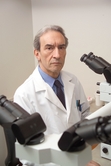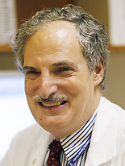Small non-cleaved-cell lymphoma (undifferentiated lymphoma, Burkitt's type) in American adults: Results with treatment designed for acute lymphoblastic leukemia Journal Article
| Authors: | Straus, D. J.; Wong, G. Y.; Liu, J.; Oppenberg, J.; Filippa, D. A.; Gold, J. W. M.; Offit, K.; Clarkson, B. D. |
| Article Title: | Small non-cleaved-cell lymphoma (undifferentiated lymphoma, Burkitt's type) in American adults: Results with treatment designed for acute lymphoblastic leukemia |
| Abstract: | purpose: Small non-cleaved-cell lymphoma (SNCL) "Burkitt's type," a rapidly growing lymphoma, has been rare among adults in the United States, but has greatly increased in incidence with the acquired immunodeficiency syndrome epidemic. This report details the results of treatment of adult SNCL with a series of protocols originally designed for the treatment of acute lymphoblastic leukemia (ALL). patients and methods: Between July 1973 and May 1987, 29 adults with newly diagnosed SNCL were treated at Memorial Hospital with intensive chemotherapy originally designed for ALL: the cyclophosphamide L-2, L-10, L-17, and L-20 protocols. Nine patients had positive serologies for human immunodeficiency virus (HIV) infection. One patient with all measurable disease resected was not evaluable for response. results: Sixteen of 28 evaluable patients (57%) achieved a complete remission with treatment. With follow-up as long as 153 months (median, 47 months), 50% of all patients and 59% of patients with negative or unknown HIV serologies have survived and are probably cured. Patients with an initial serum lactic acid dehydrogenase (LDH) level of greater than 500 U/L had a significantly shortened survival as compared with those with a lower serum LDH. Other pretreatment patient characteristics associated with a shortened survival of borderline statistical significance were high National Cancer Institute stage (C, D) and bone marrow involvement. These results are similar to those for ALL and lymphoblastic lymphoma and are comparable to those for American SNCL in the literature. conclusions: Approximately one half of adults with SNCL are curable with intensive chemotherapy. More intensive chemotherapy with hematopoietic growth factor and/or autologous bone marrow or peripheral stem cell support may increase curability. © 1991. |
| Keywords: | adolescent; adult; clinical article; survival rate; prednisone; doxorubicin; united states; combined modality therapy; chemotherapy; cytarabine; methotrexate; human immunodeficiency virus infection; follow-up studies; undifferentiated carcinoma; neoplasm staging; antineoplastic combined chemotherapy protocols; radiotherapy dosage; recurrence; cyclophosphamide; acute lymphoblastic leukemia; daunorubicin; dactinomycin; remission induction; human immunodeficiency virus; acquired immune deficiency syndrome; bone marrow transplantation; burkitt lymphoma; tioguanine; drug induced disease; intravenous drug administration; whole-body irradiation; mercaptopurine; oral drug administration; hematologic diseases; leukemia, lymphocytic; human; male; female; priority journal; article; support, non-u.s. gov't; lymphoma, small noncleaved-cell; intrathecal drug administration |
| Journal Title: | The American Journal of Medicine |
| Volume: | 90 |
| Issue: | 1 |
| ISSN: | 0002-9343 |
| Publisher: | Elsevier Inc. |
| Date Published: | 1991-01-01 |
| Start Page: | 328 |
| End Page: | 337 |
| Language: | English |
| DOI: | 10.1016/0002-9343(91)90573-g |
| PUBMED: | 2003515 |
| PROVIDER: | scopus |
| DOI/URL: | |
| Notes: | Article -- Export Date: 27 September 2019 -- Source: Scopus |
Altmetric
Citation Impact
BMJ Impact Analytics
Related MSK Work








